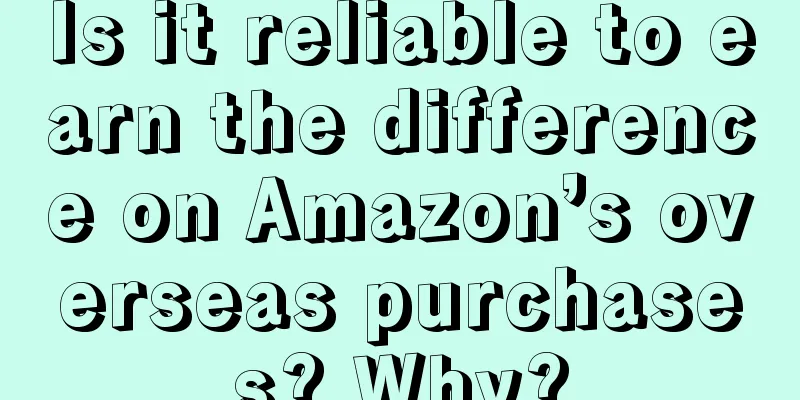6000 words of practical information | 20 brands, 5 steps, 3 futures, a guide to "IP character personalization" for new consumer brands

The previous article is "Four major schools of "IP roles" of new tea brands - learn from Mixue Bingcheng how to super-symbolize IP", this article learns from the "heart sect" Nayuki's Tea, the personality role school of "my destiny is determined by myself, not by God". Faction: Personality role faction. Basic concept: IP personalization is an efficient method of brand personalization. Core functions: human belonging and emotional connection. Methodology: Brand IP prototype/personality → IP personification → brand personality/image → brand assets
origin:
Theory and writings: Born out of Hopkins' "brand personification" (try to create a suitable style for each advertising theme, and it is a great achievement to be able to create a product personality appropriately, 1927), it became distinctive and eye-catching with Ogilvy's "Brand Image Theory" and Leo Burnett's "Marlboro Cowboy". In 2001, Margaret Mark and Carol S. Pearson innovated the "12 Brand Archetypes Meaning Management System" based on Jung's archetype and collective unconscious theory. Excellent works: "Twelve Archetypes That Influence Your Life", "Once Upon a Time - Using Mythological Archetypes to Create a Brand That Is Deeply Rooted in People's Hearts", and "Emotionally Driven - Coca-Cola" . 1. Representative brand of new tea drinks: Nayuki’s TeaIn December 2021, Nayuki announced the opening of the beautiful multiverse and officially announced Nayuki’s official IP & brand ambassador "NAYUKI". Putting aside the concepts of the metaverse and NFT, this is a representative of the personality-based IP among new tea brands. First of all, based on its brand DNA, Nayuki created a virtual brand spokesperson "NAYUKI" - green eyes, wearing green clothes, and wearing Nayuki's iconic green heart on the head. In terms of image, it is unique and stunning . Secondly, NAYUKI is given a personality. In the official introduction, "NAYUKI" is the first new miracle in the beautiful multiverse. Wherever it touches, clouds and fog dissipate, and flowers bloom, guiding us to explore the unknown, as great and endless as a perpetual motion machine. A concept video was released based on this. Finally, Naixue simultaneously launched the physical version of IP trendy toys, and the IP image was launched, providing imagination for Naixue to build a more interesting and story-telling brand space. ▲Pictures from the Internet In fact, the "NAYUKI" IP has just entered the market, and was only given a unique image and personality. After its launch, it became silent and did not expand and deepen further, let alone become a bridge to communicate with users and form a unique charm. In China, the IP personalization journey of most brands ends here. 2. These are the two most successful cases of IP personalization, bar none.Starting with an IP personality and ultimately achieving a brand personality and image are the two examples of 7-Up and M&M's. 1. 7-Up and 7-Up Boy7-Up’s Fido Dido not only exists as a brand image, it is a truly independent IP character with its own comic books, short animations, derivative products, and it also participates in various art activities. With his eternally youthful image, free and uninhibited personality, and unique outlook on life, he has formed his own IP culture - It's cool to be you, Normal is boring, Dare to be different. ▲Pictures from the Internet 2. M&M's and M&M dollsM&M's, a chocolate bean brand founded in 1941, first launched two small dolls in 1954. Despite the single image, they were immediately popular. Later, due to stagnant growth, it found advertising agency BBDO to reshape the brand. In 1995, BBDO proposed a new solution, designing six characters based on the six colors in the product. First, they looked at the most successful sitcoms of the time, such as Cheers, Friends, and Seinfeld, and found that the characters had one thing in common - 2 key characters and about 4 secondary characters. Then, I found a prototype for each character, just like " God created people ", giving them distinct personalities, such as the violent conspirator, the lovable fool, the smart guy, the femme fatale, and the sharp, calm critic. Therefore, each of the six characters of M&M has its own personality. Red M&M is an arrogant schemer, Yellow M&M is a cute fool, Blue M&M is confident and calm; Green M&M is a sexy femme fatale; Brown M&M is smart and sophisticated, and Orange M&M is anxious and paranoid. ▲The picture comes from the early M&M traceability on the Internet The personality building of the M&M's IP not only turned the tide, but also made M&M's the most popular candy brand and IP in the world. Designers Susan and Paul have three IP character perspectives worth learning from:
3. Five Dilemmas of the Personality Role SchoolIP personification seems simple. Just create an IP character, give it a name, declare the personality, and give a description of its character, and it seems that you can succeed. However, looking across China, there are few successful cases of brand IP personalization because of the following five problems. Problem 1: No brand genes, no distinct imageMost IP characters do not have brand genes/prototypes integrated into them when they are first created. They are IPs for the sake of IPs; or their images are similar. These homogeneous characters have no sense of existence, such as most urban IP cartoons. Problem 2: No story, no scene, no operationMany brands’ IP characters have vivid images and also output some content: emoticons, dolls, peripheral cultural and creative products, etc.; but in terms of personification, it is just a piece of text in the description, without the blessing of story or the integration of scene, and is actually a mascot. IP operations are even more superficial, such as Alibaba's Animal Group, Dedao's Owl, and Xiaomi's Mi Rabbit. ▲Pictures from the Internet Problem 3: No unique personality, no interesting soulBeautiful appearances are all alike, but interesting souls are rare to find. There are also some brand IP characters, some of whom have expressions and stories, and have made many cross-border efforts, but they are still unable to break through the circle and build a brand. Why? Because their so-called "personality" is not unique and has no personality, and is common to all brands. Haier Brothers, Jiang Xiaobai, Three Squirrels, Zhang Junya, and White Rabbit are considered excellent, but if compared with M&M beans and 7-Up Boy, they lack more than just flavor . Take the "cuteness" of Three Squirrels as an example. There is no essential difference in personality among the three, and they are all the joy and happiness of Chinese children's animation. Although they can interact with children and families, they are far from the core purchasing groups and scenarios; more importantly, the brand positioning of "making the owner happy" has no uniqueness and exclusivity in character setting, let alone cultivation, and has not been demonstrated in interactive communication. ▲Pictures from the Internet Let’s take a look at the six M&M’S dolls. They are positioned as “childlike” rather than “children”, have the concept of “irresistible fun”, and have rich and realistic personalities. In terms of expression, interaction, and action, each doll IP can be combined with a certain trend culture and constantly given new value with the times, creating a 30-year-old IP unbeaten legend. Question 4: No interaction, no relationship; no emotion, no lifeBrands need interactivity and deeper emotional connections to have a future. Therefore, a valuable IP must have continuous interactivity to build relationships and make the characters full of emotions to enter life. When Wangwang's Wangzai transformed from a "super symbol school" to a "personality role school", due to the lack of clear personality and emotions, the memories, nostalgia, feelings, Chinese style, spoofs, flash mobs, blind boxes, cross-border collaborations, and hot spots, after the disorderly madness, it always goes around in circles. Surprisingly, in 2019, Want Want found its own IP path , with continuous emotional connection - " accompany you in a happy life ", started to connect with users, entered life, became stronger because of "company", and began to give back to Want Want. ▲Pictures from the Internet Problem 5: No innovation, no growthThere are also some brands that have dazzling personalities and a dream start, but they lack persistence, forget to evolve, and have no achievements in new social relationships or new emotional connections. In 2017, Diao Pai launched "Diao Xiong", a very outstanding IP, but it did not go further and become a brand asset. It's a pity, perhaps it did not receive the attention of senior management. ▲Pictures from the Internet As for the earlier Jiang Xiaobai (2014), it became popular with Jiang Xiaobai IP and "content bottle", and "I am Jiang Xiaobai" even became one of the top 10 animations on Bilibili in 2017. However, due to the generational change of young people (from those born after 1985 to those born after 1995, Generation Z), it did nothing and did not make progress. Facing the surging new drinks that are more communicative, it was unable to cope with it and gradually lost its advantages. ▲Pictures from the Internet Obviously, after asking these five questions, you can get a complete set of IP creation rules, and the most important thing is that you must have an IP belief and soul of " my destiny is in my own hands ". 4. "My destiny is in my own hands, not in the hands of God": A 5-step guide to personalize the "IP character".In addition to the methodology of 7-Up Boy and M&M's mentioned above, and the regularization of the five questions, we can also see the characteristics of a strong vitality IP from the well-known Greek mythology, Chinese mythology, and the Marvel Universe; we can also draw wisdom from the Chinese hit "Nezha - The Devil Child". Five steps to completely open the door to IP "personality faction": Step 1: Find the prototype - the prototype of the brand and IP characterFew brands use the "prototype" theory to achieve IP personalization, but most outstanding brands must have their own brand prototype. 1) What is the brand "archetype" theory? 4 human motivations + 12 brand archetypes + 36 brand expressions:
2) Why do we need to find a brand “prototype”?
This article does not elaborate on the "archetype" theory. It can only be said that once you find your own "true self" among the 12 brand archetypes, your brand meaning and value will be unique, and IP role-playing will be more effective. For more detailed methods, we recommend reading "Once Upon a Time - Using Mythological Prototypes to Create a Brand that is Deeply Rooted in People's Hearts". Step 2: Define the image - the unique image of the brand geneWhat is a unique image with brand genes? If your IP cannot be recognized at a glance when placed in the same industry or with the same visual style, it is a failed IP image. Among the numerous "bulls", which one can stand out: China Europe Fund's long bull "Niu Ou Ou" The DNA of this long bull includes: the bronze bull of Wall Street; the bull market of the stock market; winning the Golden Bull Award for seven consecutive years; competing for the long-term flow of funds, and adhering to the mission of "speaking with long-term performance"... Therefore, a very long bull stands out . ▲Pictures from the Internet Let’s look at Kumamon again. He has black, the main color of Kumamoto Castle, and two big blushes that are often used in cute IPs. His annoying personality makes him stand out from the 45 Japanese mascots in Osaka alone. ▲Pictures from the Internet There are three points to note:
Step 3: Give characterization - vividness, resonance and clarityA distinct personality is very important. Not having a distinct personality is the same as having no personality at all. Just like the squirrels in Three Squirrels and NAYUKI in Nayuki, they have unique images but lack a distinct personality. Why "Nezha" has become a phenomenal animation? It's because its " distinctive personality " and "unyielding attitude" perfectly fit and resonate with the values of young people. This is an era where "money can't buy what I like", and it is also an era where "my destiny is in my own hands". We can use three keywords to describe the important characteristics of "personality" :
At this point, the preparations for the personality role faction are complete. Step 4: Emotional connection - telling stories around character setting, creating rituals, and integrating into lifeHow can we use “IP characters” to make users feel emotionally connected to a brand? Think about the totem IP in the tribal era, how it was deeply rooted in people’s hearts and formed a sense of belonging: appearing in every place in the tribe, full of ritual blessings, stories told over and over again, and comprehensive applications in life.
In this way, we can understand the gameplay and achievements of Kumamon: free and open access, opening a Twitter account, hiring Kumamon as a temporary civil servant, participating in his own or "other people's" promotional activities... until he is fully integrated into the entire city and people's lives, and becomes our common story. Step 5: Growth and Evolution – Brand Equity and Destiny ControlThe last step is to ensure the durability and vitality of the "IP character". This requires the "IP role" to grow, innovate, and keep pace with the times: enrichment and condensation of world views and values, optimization and alienation of visual images, the addition of multiple scenarios and multiple experiences, and even giving control to users. Think about how those super IPs in Europe and the United States are becoming more and more popular: Dragon Ball Goku, Disneyland, and the Avengers; while China's Calabash Dolls, Avanti, The Monkey King, and Black Cat Sheriff have disappeared. ▲Pictures from the Internet We also need to recognize that "IP roles" are the fractals of brands . Therefore, every exposure, every performance, every change, and every touch point of the IP must be an accumulation of brand assets, representing the strengthening of users' understanding of the brand, otherwise it is meaningless. Furthermore, when your "IP character" has life, he will grow on his own, activate the scene on his own, attract users, form tribes, and create value. In this "infinite game" , his destiny is naturally in his own hands. Therefore, the ups and downs of celebrities, the rise and fall of categories, and the iteration of models are insignificant in the face of the vitality of "IP characters". This is the true meaning of "my destiny is in my own hands, not in the hands of God"! 5. The future of IP personality roles - there is always one you needFrom IP mascot to "IP character", and then from IP personality to brand personality, IP personality role faction is no longer a marketing method , but has become the driving force and infinite imagination of digital business evolution with a clearer business model. There are three futures, and there is always one that you need. 1. Connecting new consumer groups, the best weapon for brand activation and "anti-fragmentation".
This is a great era where mobility and fragmentation have become the foundation of business and the attention span has come to an end; this is also the fourth era of consumption that places more emphasis on interpersonal relationships and the pursuit of the meaning of life. A symbolic IP, even a super symbol, faces digital natives, fragmented time and space, and increasingly high communication costs. It becomes increasingly difficult to compete for user mental cognition, let alone stand out. At this time and in this situation, entering the game with a distinctive "IP character", connecting identity with character setting, carrying forward emotions with stories, using technology to enhance interaction, and integrating multiple touchpoints and multiple forms is a correct action to quickly bring emotions closer and integrate with the lives of digital natives. It is also an effective weapon against "fragmentation". If the "super symbol school" is a game for wealthy people in big companies, then the "personality role school" is the new bonus, new bargaining chip and new tool for new consumer brands. 2. New brand assets & new business modelsSome people believe that brands are a product of the last century and their most important function is to reduce consumers’ selection costs during the purchasing process; while IP is the core of business in this era and it is a way for users to achieve self-realization. Although it’s a bit exaggerated, a successful IP can indeed become the most important brand asset: the clown of McDonald’s, the Colonel of KFC, the Bean Boy of M, and the Tire Man of Michelin. At the same time, the “IP role” has also evolved into a new business model, forming new brand assets with new logic, new rhythm, new pace, and new parameters:
This is the new comparative advantage of a new round of business games in the face of uncertainty. 3. The Gate to the Irreversible MetaverseFrom text to stage plays, from live-action films and television to virtual images; from paper and electronic media to digital space; from flat two-dimensional IP to intelligent virtual IP, this evolution is irreversible. Among all the methods, "personalized" IP is almost the best vehicle for entering the metaverse. When IP characters continue to penetrate, evolve, and integrate in the metaverse scene, thereby being more creatively exerted, it is not only a ubiquitous global trend, but also a door to new business. Imagine that you own a virtual super IP. In the digital world, you have unlimited clones and are tirelessly interacting, learning, living, growing, and creating with your users, partners, and employees. What else do you expect except to embrace it more firmly? What’s interesting is that many brands have seen this future, but lack the “personalized” interpretation. For example, Nayuki’s “NAYUKI” mentioned above made a good start and seized the initiative, but it didn’t even stand firm in the third step and tried to play tricks with NFT. The result can be imagined. If we only rely on enthusiasm and imagination, but lack the perspective and systematic thinking and the desire to build a better place, these things will be impossible to explore, let alone explode. 6. PostscriptFinally, there are four points to understand when personalizing brand IP characters:
Taking personalized IP as the starting point, are you ready to develop new narrative methods and communication means in the accelerated digital integration? Author: Brand Ape WeChat public account: Brand Yuanchuang (ID: brand-yuan) |
<<: TikTok is no longer running wild
>>: E-commerce platforms are fighting hard for the New Year Shopping Festival
Recommend
What are the tips for optimizing Shopee titles? How to run a good store?
On the Shopee platform, the title is one of the im...
Product data analysis: optimize product strategy and improve sales conversion
The article discusses in depth how to optimize you...
How to easily place an order on Shopee Taiwan? Introduction to popular categories on Shopee Taiwan
Many domestic merchants have opened stores on Shop...
How to build an independent Amazon website? How to layout it?
Cross-border e-commerce has been developing better...
How did this brand sell cotton for 4 billion by upgrading a cotton flower?
Want to improve your brand value? I think you need...
Big news! WeChat official accounts can finally change titles, and also launched the "content boost" function
Yesterday, WeChat official accounts made two impor...
From the growth story of virtual anchors, we can see the diversified ecology of Douyin live broadcast
Starting from Douyin live broadcast, this article ...
How to cancel Facebook account? What are the conditions for canceling Facebook account?
In this age where social media is everywhere in ou...
Why has “the most obedient man on the entire internet” become so popular on Xiaohongshu?
@小艾同学 posted her own photos on Xiaohongshu and ask...
How does Shopee find the source of goods for cross-border e-commerce? How to run Shopee well?
Shopee, like AliExpress, is a cross-border e-comme...
Fall in love with the tea drinks of joint brands, but the joint brands are mainly "hard to drink"
Cross-border collaboration is the most popular bra...
How to fill in the Amazon address? Any suggestions?
As the world's largest cross-border e-commerce...
Help, are copywriters going to lose their jobs to poets?
Nowadays, copywriting is becoming more and more di...
10 Marketing Predictions for 2023
In the past year, the business world has witnessed...
The era of short drama 2.0: gold rush, big changes, new trends
In 2024, short short dramas ushered in the booming...









